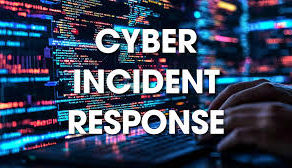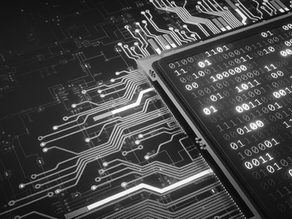top of page

BLOGS
Search


Incident Response Framework: How to Prepare Before You’re Breached
In the world of cybersecurity, prevention alone is no longer enough. Attackers evolve daily, exploiting unknown vulnerabilities, human lapses, and supply-chain exposures. No system is ever completely immune — which means that preparation, not panic, defines the outcome when a breach occurs. A well-structured Incident Response Framework (IRF) ensures that when the inevitable occurs, your organization responds with clarity and confidence — minimizing damage, preserving trust,


Seeing Before It Strikes: Why Threat Intelligence Matters
In cybersecurity, timing is everything. The difference between detecting a breach in minutes versus weeks can decide whether an incident is a minor inconvenience or a multi-million-dollar disaster. Yet, most organizations continue to rely on reactive defenses —waiting for alarms to ring only after attackers are already inside. But what if you could see the threat before it struck ? What if you could predict an attacker’s move the way a grandmaster anticipates a chess strategy


Understanding MITRE ATT&CK: Turning Threat Data into Actionable Defense
In cybersecurity, knowledge is power — but structured knowledge is unstoppable. That’s exactly what the MITRE ATT&CK framework brings to the table: a globally accessible knowledge base that helps organizations understand, detect, and respond to cyberattacks with precision. What is MITRE ATT&CK? The MITRE ATT&CK (Adversarial Tactics, Techniques, and Common Knowledge) framework is a curated library of real-world attacker behaviors. It was developed by MITRE Corporation — a n


Zero Trust vs. Traditional Security: Rethinking the Perimeter in a Borderless World
Introduction: The End of the Digital Perimeter For decades, cybersecurity relied on a simple principle: trust what’s inside, defend against what’s outside. This traditional “castle-and-moat” model worked when corporate assets lived within physical offices, and employees connected from company-managed devices behind firewalls. But that world no longer exists. Today cloud computing, hybrid work, BYOD devices, and third-party integrations have dissolved the perimeter. Sensitive


From Guesswork to Governance: The Power of Risk Assessment
In cybersecurity, uncertainty is the enemy of control. Every organization today faces a growing maze of digital threats—malware, ransomware, insider leaks, phishing, misconfigurations, and supply chain compromises. Yet, while many businesses pour resources into security tools and technologies, few truly understand where their biggest risks lie . That’s where risk assessment steps in—the bridge between guesswork and governance . Risk assessment transforms cybersecurity from a


Risk Quantification in Cybersecurity: Turning Threats Into Measurable Business Decisions
Introduction: From Fear to Financial Clarity For years, cybersecurity has been communicated through fear — breaches, downtime, and data loss. While these risks are real, boards and executives increasingly need quantifiable answers to critical questions: How much risk are we carrying? What’s the potential financial impact of a ransomware attack? Where should we invest first for maximum risk reduction? This is where cyber risk quantification (CRQ) transforms traditional secur


Zero Trust Security: Moving Beyond Perimeter Defense
For decades, cybersecurity has been built around a simple principle — protect the perimeter . The idea was straightforward: build strong firewalls, secure your endpoints, and keep the bad guys out while trusting everything inside the network. But in today’s cloud-first, remote-work-driven, API-connected world, that perimeter has dissolved. Users, data, and applications no longer live in one place — they move across devices, networks, and geographies. In this new digital land


Why Your Phone is the New Hacker’s Favorite Target
Introduction: The Breach in Your Pocket Your smartphone is no longer just a communication tool — it’s a portable data vault holding your messages, passwords, payment apps, location data, and even work credentials. While we obsess over securing our laptops or office systems, hackers have shifted focus to mobile devices — the weakest, yet most personal link in our digital chain. Recent reports show a 400% rise in mobile-based cyberattacks since 2023, driven by remote work, m


Cyber Threats Are Closer Than You Think
Introduction: The Hidden Threats in Everyday Life Every day, we connect to the digital world — checking emails, using cloud apps, shopping online, or logging into work platforms. These conveniences come with an invisible cost: exposure to cyber risk . You don’t have to be a hacker’s “ideal target” to fall victim. In today’s hyperconnected world, every user, every device, and every login represents an entry point for attackers. Cybersecurity isn’t just for IT teams or enterpr


Why Cybersecurity Is Everyone’s Business
Introduction: The Human Factor in Cyber Defense When a major cyber breach makes headlines, the spotlight almost always lands on the attackers — sophisticated hackers, shadowy ransomware groups, or unseen adversaries lurking in the digital dark. But if you look closer, the real cause is often surprisingly ordinary. A single click on a malicious link.A missed software update. A weak password is reused one too many times. Cybersecurity isn’t just a technical challenge — it’s a


What Makes a Cybersecurity Framework the Backbone of Defense?
In today’s hyper-connected world, where every click, transaction, and communication flows through digital infrastructure, cybersecurity...


Understanding the NIST Cybersecurity Framework
Introduction: From Complexity to Clarity In today’s evolving threat landscape, cybersecurity leaders are expected to measure, manage, and...


Cybersecurity 101 — Protecting Yourself in a Digital World
Introduction: The Digital Age Dilemma Every scroll, click, and online purchase connects you to a digital world filled with opportunities...


Beyond the Knowns: Why Attack Surface Management is the New Frontier in Cybersecurity
For years, the cornerstone of every cybersecurity program has been Vulnerability Management (VM). The process is straightforward and...


Strengthening Security Policy Enforcement for Encrypted QUIC Traffic with Safe Internet Access (SIA)
As modern communication protocols like QUIC become more widely adopted, organizations face new challenges in maintaining visibility and...


Enhancing Compliance with Event Retention Directives: Leveraging Event Log Aggregator (ELA) for Government Requirements
In today’s evolving regulatory environment, organizations are required to comply with stringent government mandates regarding the...


Enhancing Security Policy Enforcement for Encrypted Communication with Safe Internet Access (SIA)
The increasing adoption of encrypted communication protocols such as DNS over HTTPS (DoH) , DNS over TLS (DoT) , QUIC , and modern...


Cyber Security Framework
Cyber security is the body of technology, process, and practice, designed to protect systems, networks, programs, and data from cyber...


Key Tenets of NIST Zero Trust Architecture
Before delving into zero trust architecture, NIST recommends that a few fundamental tenets be considered to ensure the success of any...


NIST Cyber Security Framework
Despite the existence of multiple cybersecurity frameworks, NIST is renowned to address cyber vulnerabilities and foster risk mitigation...
bottom of page
.png)